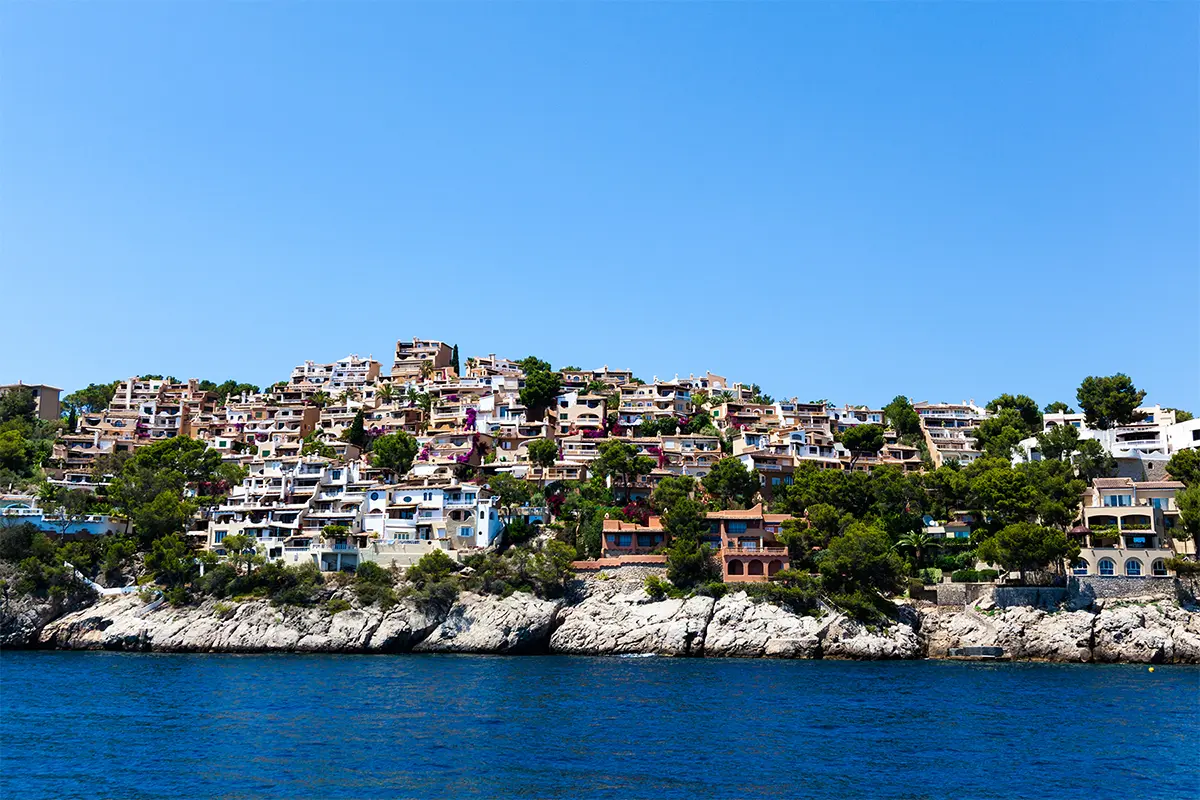Last Updated on 18th December 2025
Buying a house in Spain as a retirement residence, second home, or holiday property appeals to thousands of foreign national buyers – but if you’re interested in living in Spain longer-term, you can also use your planned property investment to qualify for permanent residency.
Many international buyers opt to buy real estate in Spain due to low average property prices, the flexibility of travelling to their second residence as and when they wish, and the reduced expense, over time, of regular visits without the need to secure hotel accommodation.
Visa conditions apply, with non-EU citizens limited to 90 days for each 180 days. This makes a residency permit and the freedom of travel an attractive proposition, particularly if buying a Spanish home has long been part of your plans.
An Overview of the Golden Visa Programme in Spain
The Spanish government launched its ‘golden visa‘ scheme in 2013, aiming to attract affluent foreign nationals to contribute to the economy, invest in the local property market, securities, government bonds and equity shares, and help generate jobs and business opportunities.
UK citizens can choose between several options, each of which may qualify them for the visa, although buying a home is by far the most popular solution, with a minimum purchase value of €500,000.
Applying for residency via the golden visa is quicker and easier than most comparable routes. Although the property purchase, investment or cash deposit you make must comply with minimum thresholds, there are several benefits:
- Foreign national residents are not expected to live in Spain for any minimum period, while noting that permanent residency and citizenship are dependent on meeting continuous stay requirements, although not mandatory.
- The property they purchase can be used as a rental investment or portfolio asset.
- There are no conditions linked to Spanish fluency or language exams.
Officially called the Spanish Residence by Investment Program, this scheme enables foreign nationals who make the required investment and adhere to other criteria to initially secure a temporary residence permit, then transferring it for permanent residency after five years if they choose to reside primarily within Spain.
You can add immediate family members such as a spouse and children to the application and apply for a residency card within around a month. Where applicable, after another five years of continuous residence, non-EU nationals with permanent residency status may be able to apply for full citizenship.
Conditions of Purchasing a Property in Spain to Qualify for the Golden Visa
Residency applicants must spend at least €500,000 as part of their Spanish property acquisition. However, that threshold does not increase regardless of the family members you choose to add to your application.
The property itself doesn’t necessarily need to be one higher-value home, nor does it have to be a residential property. Qualifying real estate above the minimum value can include:
- Commercial or residential properties.
- One or several buildings or homes that cumulatively reach the threshold.
- Properties bought by an individual or company, provided the applicant is a controlling shareholder.
- Residential homes bought to live in or rent out.
A possible advantage of buying Spanish property through a company is that, in some cases, this will enable the buyer to claim back the sales tax element. While the investor must retain ownership for five years and cannot resell the property, they can earn a rental income.
All other property purchase costs are in addition to the minimum value, and applicants are responsible for paying all associated expenses, including property transfer tax. This varies depending on whether the property is residential or commercial, and a new-build or resale property purchased from a previous owner.
We’ll look at property purchase costs shortly. Still, the transfer tax usually varies from 6% up to 25%, including stamp duty and IVA – the equivalent of VAT – and for resale properties is based on the cadastral value calculated by the local land registry.
Additional Costs and Fees to Apply for Spanish Residency by Investment
Alongside the property transfer tax and purchase price, investors must transfer a minimum value into a Spanish bank account. This requirement is intended to verify that they are financially solvent, with the transferred value equivalent to at least four times the annual minimum wage.
For 2024, that amount is based on €600 a month, or €7,200 a year, necessitating a transfer of €28,800 for an individual applicant, plus a further €7,000 per dependent.
Budgeting for the Cost of Buying a Property in Spain
As in every country, the Spanish property market varies considerably between regions. Homes in key destinations, major cities and tourism hotspots inevitably cost more than those in quieter and more rural areas. However, average house prices remain significantly lower than in the UK:
- A city centre apartment in Spain costs an average of €3,575 per square metre (£3,036) compared to £5,012 in Britain.
- Less central homes cost an average of €2,082 (£1,768) per square metre in Spain, vs an average of £3,771 in the UK.
Living costs are also generally lower, with average prices for everyday outgoings, including utilities, 23.5% more affordable.
We always advise prospective expats to account for the secondary costs of an overseas property purchase and to consider their long-term plans, where living in Spain may be less expensive but also comes with the complexities of cross-border taxation.
It is also essential to have a complete overview of all the transaction costs since these extend beyond the value paid for the property, the transfer tax, and the applicable visa application charges.
Tax Implications When Purchasing Spanish Real Estate
Property investors must budget for land registry fees and notary costs, usually up to 2% of the transaction value, and legal fees, with an average additional cost of 1% to 2% of the property purchase price.
Other Spanish property purchase costs that may apply can include:
- Costs of a house survey conducted by either a surveyor or valuation agent
- Commissions paid to a real estate agent
- Insurance charges
- Utility connection costs
Foreign buyers purchasing a brand new property must pay IVA based on 10% of the property price, or 21% for commercial real estate. However, there are variations in locations such as the Canary Islands, where each autonomous community may set a different localised tax rate.
Keeping all of these considerations in mind, creating a comprehensive, accurate budget, and ensuring your planned property purchase adheres to your long-term plans will ensure you make informed, clear decisions and can confidently proceed with your residency application.
Further information is available in our earlier guide to Spanish property taxes, or you can contact the knowledgeable Chase Buchanan Wealth Management financial advisory teams in Javea, Marbella, and Tenerife.
*Information correct as at July 2024


